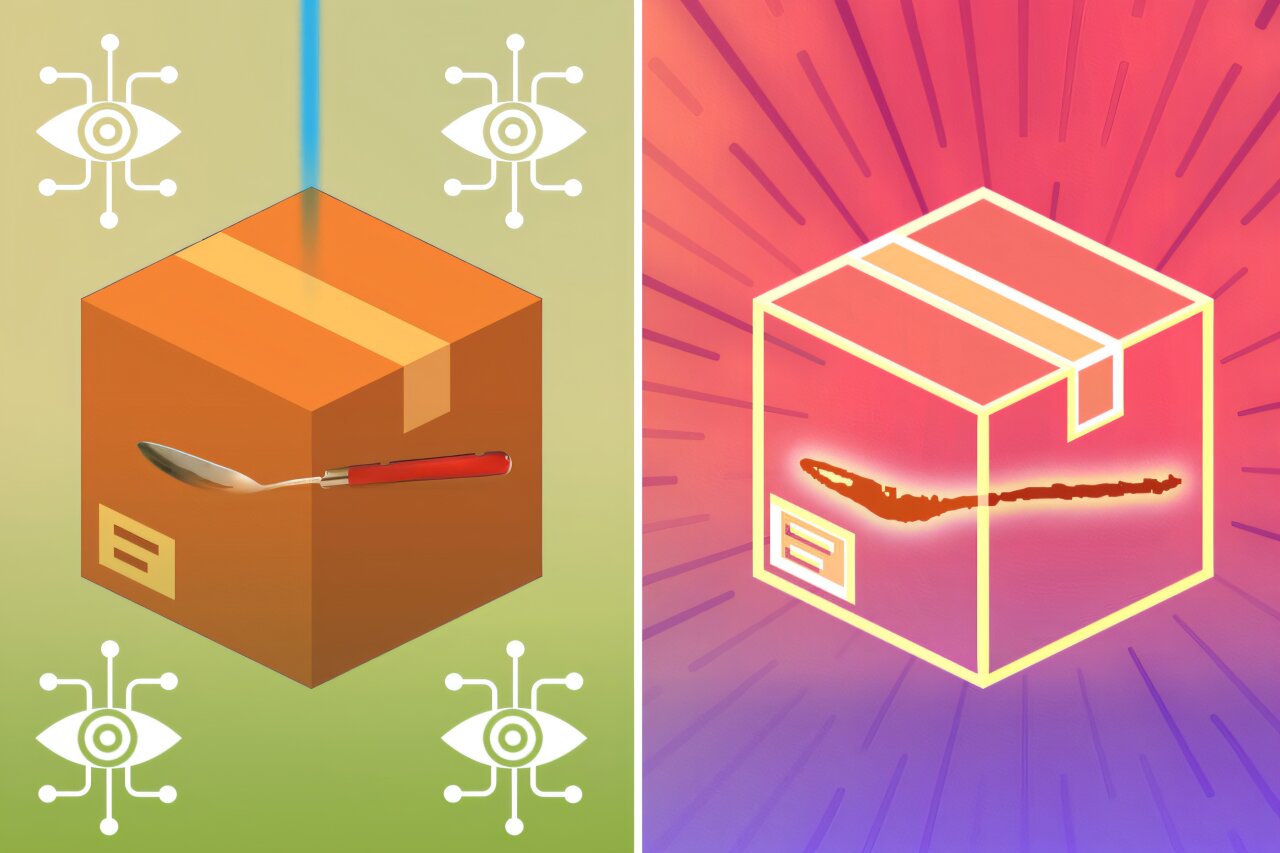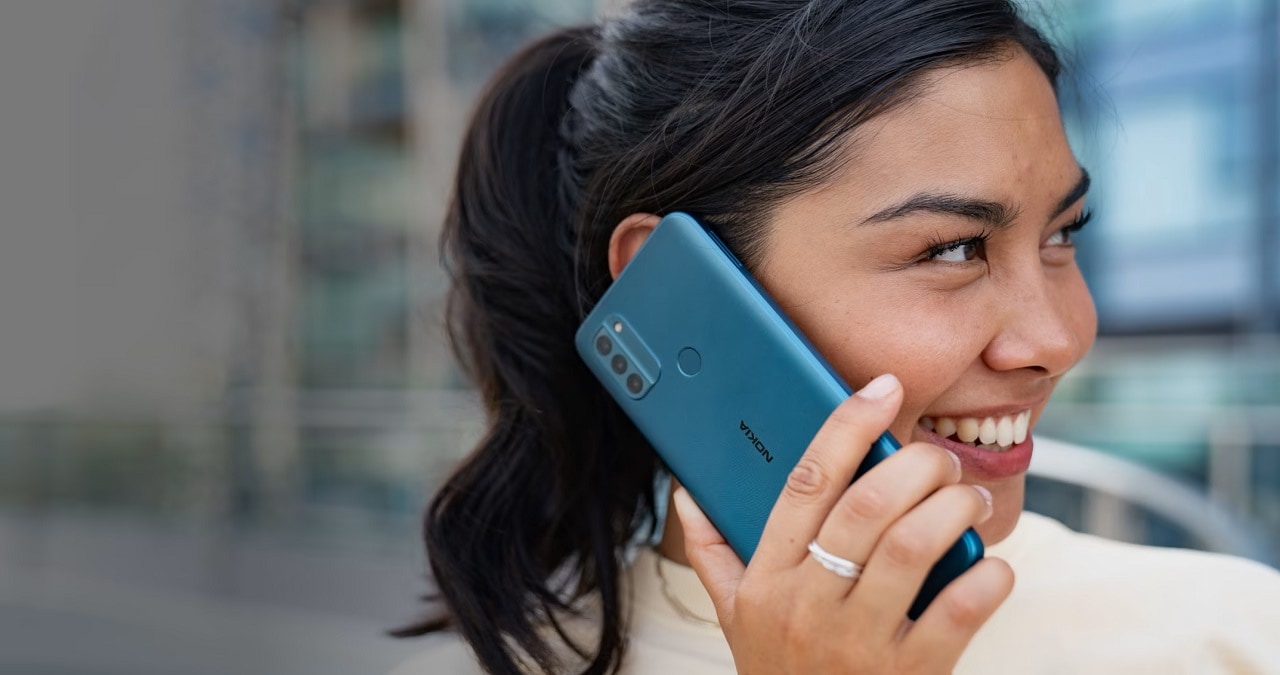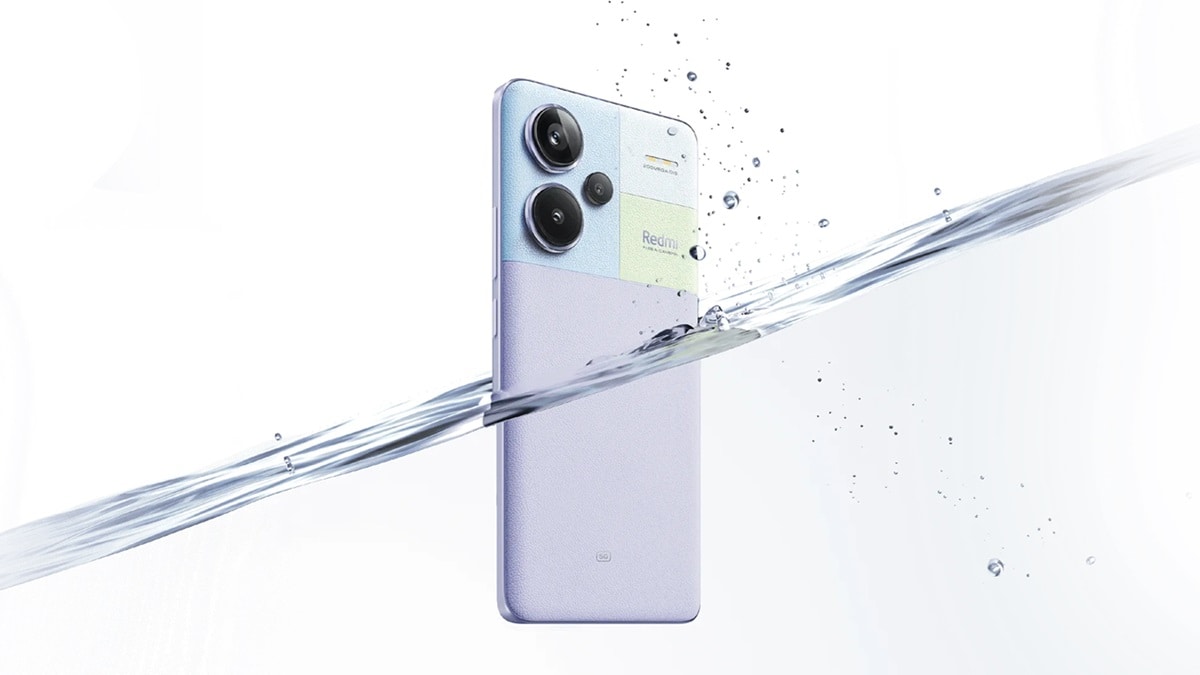
A new system enables a robot to use wi-fi signals to identify the shape of a 3d object that is hidden from View, which clock be especially used in warehouse and factor settings. Credit: Massachusetts Institute of Technology
A new imaging Technique Developed by Mit Researchers could enable Quality-Control Robots in a Warehouse to Peer Through A Cardboard Shipping Box and See is broken.
Their Approach Leverage Milimeter Wave (MMWAVE) Signals, The Same Type of Signals Used in Wi-Fi, to Create Account 3D Reconstructions of Objects that Are Blocked from View.
The waves can travel through common obstacles like plastic containers or interior walls, and reflex offdeen objects. The system, called mmnorm, collects during reflections and feeds them into an algorithm that estimates the shape of the object’s surface.
This new approach achieved 96% Reconstruction Accuracy on a Range of Everyday Objects With Complex, Curvy Shapes, LIKE SILVERWAREWAREWAREWAREWAREWARE and A Power Drill. State-of-the-Shaw Baseline Methods achieved only 78% accuracy.
In addition, mmnorm does not require additional bandwidth to achieve such high accuracy. This Efficiency Cold Allow the method to be utilized in a wide range of settings, from factories to assisted living facilities.
For institution, mmnorm could enable robots work in a factory or home to distinguish between tools hidden in a drawer and identify their hands, so they could get more efficiently grrasp and manipulat Without causing damage.
https://www.youtube.com/watch?v=jsl6mxsdrcq
“We’ve been interested in this problem for quite a white, but we’ve been hitting a wall because past methods, while they were were mathematically elegant, werened us beed to go. Needed to come up with a very different way of using these signals Electrical Engineering and Computer Science, Director of the Signal Kinetics Group in the Mit Media Lab, and Senior Author of a Paper on Mmnorm.
Adib is joined on the paper by Research Assistants Laura Dodds, The Lead Author, and Tara Boroushaki, and Former Postdocten Zhou. The research Was recently presented at the annual international conference on mobile systems, applications and services (ACM Mobisys 2025), help in anaheim June 23–27.
Reflecting on reflections
Traditional radar techniques send mmwave signals and receive reflections from the environment to detect hidden or distant objects, a Technique Called Back Projection.
This method works well for large objects, like an airplane obscured by clouds, but the image resolution is too coarse for small items like kitchen gadets
In Studying This Problem, The Mit Researchers Realized that Existing Back Projection Techniques Ignore an important property knowledge as specialty. When a radar system transmits mmwaves, almost every surface the waves strike acts like a mirror, generating special reflections.
If a Surface is pointed towed the antenna, the signal will reflect off the object to the antenna, but if the surface is pointed in a different direction, the reflection direction, the reflection will travel Received.
“Relying on Specularity, our idea is to try to estimate not just the location of a reflection in the environment, but also also the direction of the Surface at that point,” Dodds Says.
They developed mmnorm to estimate what is called a surface normal, which is the direction of a surface at a particular point in space, and use these estimations to reconstruct the currency of the surface of the surface at Point.
Combining Surface Normal Estimations at Each Point in Space, MMNORM Uses a Special Mathematical Formulation to Reconstruct the 3D Object.
The researchers created an mmnorm prototype by attaching a radar to a Robotic Arm, which continually takes measurements measurements as it moves around a Hidden Item. The system compares the strength of the signals it receives at different locations to estimate the curvature of the object’s surface.
For institution, the antenna will receive the strongest reflections from a surface pointed directly at it and weaker signs from from surfaces that do’t directly face the antenna.
BeCause multiple antennas on the radar receive Amount of Reflection of Reflection, Each antenna “Votes” on the direction of the Surface Normal Based on the Strength of the Signal It Recovered.
“Some antennas might have a very strong Vote, some might have a very weak Vote, and we can combine all votes togethr to Produce one surface that is agreed up Says.
In addition, because mmnorm estimates the surface Normal from all points in space, it generates many posesable surfaces. To zero in on the right one, the resultars borrowed techniques from computer graphics, creating a 3d functions that chooses the surface most represent of the sygnals received. They use this to generate a final 3D reconstruction.
Finer Details
The team tested mmnorm’s ability to reconstruct more than 60 objects with complex shapes, like the handle and curve of a mug. It generated reconstructions with 40% less error than state state-up-the-art approaches, while also estimating the position of an object more across.
Their new technique can also distrust distinguish between multiple objects, like a form It also performed well for objects made from a range of materials, include wood, metal, plastic, rubber, and glass, as well as combinations of maaterials, but it does not find for objects hidden Behind metal or very thick walls.
“Our qualitative results really spendk for themselves. And the Amount of Improvement You See Makes It Easier to Develop Applications that Use these these high-resolutions for new tasks,” Borooshaki Says.
For institution, a robot can distinguish between multiples in a box, determine the precise shape and location of a hammer’s handle, and then plan to pick it up and use it for a task. One could also use mmnorm with an amended reality headset, enabling a factory worker to see lifelike images of full Occlized objects.
Its also be Incorporated Into Existing Security and Defense Applications, Generating More Account Reconstructions of Concealed Objects in Airport Security SCANNErs or Duritory Reconnannannannannannannannannannannannannannannannannannannannannannannannannannannannannannannannannannannannannannannannannannannannannannannannannanna
The Researchers Want to Explore these and other potential applications in future work. They also want to improve the resolution of their technique, boost its performance for less reflex objects, and enable the mmwaves to effectively Image Through thread thicks.
“This work really represents a paradigm shift in the way we are thinking about these signs and this 3D reconstruction process. Dodds say.
More information:
Laura Dodds et al, Non-Line-of-Sight 3D Object Reconstruction Via MMWAVE Surface Normal Estimation (2025). Doi: 10.1145/3711875.3729138, www.mit.edu/~fadel/peps/mmnorm-pper.pdf
This story is republished courtesy of mit news (web.mit.edu/newsoffice/), a popular site that covers news about mit research, innovation and teaching.
Citation: Reflected Wi-Fi Signals Cold enable robots to find and manipulate hidden objects (2025, July 1) retrieved 5 july 2025 from https://techxplore.com/news/2025-07-WI-fi- Enable- Robots- Hidden.html
This document is Subject to copyright. Apart from any Fair Dealing for the purpose of private study or research, no part may be reproduced without the written permission. The content is provided for information purposes only.



